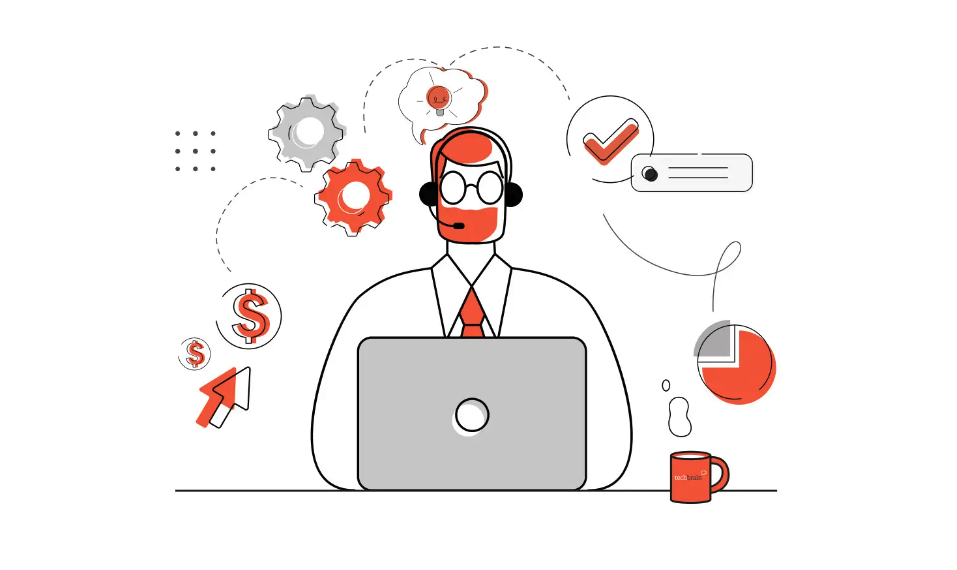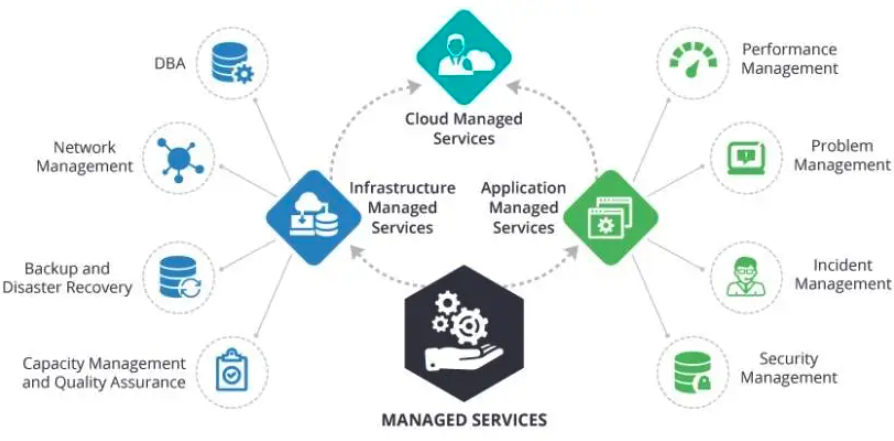
MSP Environment Explain (Image by Tech Brain)

MSP Environment Explain (Image by Tech Brain)
As we know, MSPs use advanced tools like Remote Monitoring and Management (RMM) and Professional Services Automation (PSA) to manage clients’ IT systems efficiently. But then, what is the MSP environment?
In an MSP environment, the MSP proactively manages your organization’s IT infrastructure and end-user systems.
In exchange for a monthly fee, the MSP takes ownership of the client’s technology needs, from basic monitoring and patching to a more comprehensive IT strategy and support.
However, the landscape is evolving. As you know, organizations increasingly look to digital solutions to drive growth, and the demands on MSPs are growing.
The MSPs are expected to manage IT services and contribute to strategic initiatives like digital transformation.
Of course, the demand often requires MSPs to invest in advanced technologies like AI and machine learning.
Therefore, choosing the right MSP can significantly impact your organization’s operational efficiency and innovation capacity.
The right MSP offers a flexible infrastructure, expert consultation, and proactive operations, all while optimizing costs and enhancing productivity in the MSP environment.
In this article, we’ll look at the MSP environment and the implications of choosing the right MSP for your company.
In an MSP environment, the MSP proactively manages your organization’s IT infrastructure and end-user systems. So, the MSP environment centers around a healthy IT partnership.
As your business navigates technology needs, the MSP functions as a specialized extension of your team, keeping things running, secure, and aligned with your business goals.
However, each MSP carves out its niche, tailoring services to meet the specific demands of different sectors.
Cloud managed service providers, for example, focus squarely on services that keep businesses thriving in the digital cloud.
In the cloud managed service providers environment, we will see how monitoring and managing cloud platforms ensures seamless migration and scalability for their clients.
The providers also prioritize security, protecting data and operations in cloud environments like AWS, Azure, or Google Cloud.
Conversely, MSPs focusing on the staffing industry provide a different set of services in different environments.
They manage vendor management systems (VMS), handle back-office operations, and devise contingent workforce strategies.
These MSPs simplify the process of sourcing, managing, and retaining tech talent, addressing the operational and technological complexities of staffing.
For companies using an MSP, this environment often translates to:
Moreover, understanding the MSP environment requires a deep dive into the challenges, trends, and operational strategies that define the landscape for Managed Service Providers (MSPs) today.
The Global State of the MSP Report: Looking Ahead to 2023 by Datto highlights several key aspects that MSPs face.
It underscores the importance of industry intelligence for MSPs to navigate a competitive environment.
Based on a survey of over 1,800 MSPs worldwide, the report delves into the business practices, emotional drivers, and the products and services offered by MSPs, including their managed security solutions.
It aims to equip MSPs with the necessary tools and knowledge to maintain their competitive edge in a rapidly evolving industry.
Kaseya’s 2023 MSP Benchmark Survey Report further emphasizes the changing dynamics in the MSP industry, driven by technological advancements and economic shifts.
This report outlines how MSPs adapt to recessionary pressures, competition, and technological changes, stressing the need for automation, integration, and strategic growth planning.
It also touches on the challenges and opportunities ahead, providing a comprehensive overview of the industry’s current state and prospects.
Cybersecurity remains a paramount concern, as detailed in the 2023 MSP Threat Report by ConnectWise.
This report focuses on MSPs’ unique cybersecurity challenges, including significant hacks, emerging cyberattack trends, and top ransomware methods used by threat actors.
It provides actionable insights for MSPs to enhance their cybersecurity posture in 2023, based on an analysis of approximately half a million discrete incidents.
This underscores the critical need for MSPs to stay ahead of the threat landscape to protect their businesses and customers effectively.
Collectively, these reports provide how the MSP environment should be in the current era, highlighting the importance of staying informed about industry trends, cybersecurity risks, and operational best practices.
Please note that the MSP environment isn’t just about technology; it’s the entire system built around seamlessly and securely providing IT services.
The MSP environment encompasses infrastructure, technologies, processes, and people, each playing a critical role in its success.
The backbone of an MSP environment lies in its infrastructure, which includes physical and virtual servers, network devices, and data storage solutions.
This foundation supports the delivery of managed services, ensuring reliability and scalability.
Advanced tools for remote monitoring and management (RMM), unified backup, and network configuration are integral, facilitating efficient management and security of client IT systems.
MSPs leverage a wide array of technologies to service their clients effectively.
These include professional services automation (PSA) for running your business, cybersecurity tools for threat protection, and automation platforms like Asio™ by ConnectWise to enhance efficiency.
Adopting these technologies allows MSPs to streamline operations, improve service delivery, and respond proactively to emerging threats.

Processes are the operational blueprints of an MSP environment, ensuring consistency and quality in service delivery.
This includes standardized procedures for ticket management, incident response, and client communication.
Effective processes, supported by a dispatcher to automate system procedures and ensure accountability, are crucial for maintaining high service standards and client satisfaction.
The people—technicians, managers, and support staff- are at the heart of the MSP environment.
Their skills, expertise, and dedication drive the MSP’s ability to meet and exceed client expectations.
Creating a supportive environment for staff, including clear communication strategies and escalation procedures, is key to fostering a productive and engaged workforce.
Operating within the MSP environment presents challenges and considerations that require careful navigation and strategic planning.
One of the foremost challenges is cybersecurity threats. With the threat landscape continuously evolving, MSPs must stay ahead by leveraging advanced cybersecurity tools and solutions to protect their clients effectively.
This necessitates a comprehensive understanding of the types of cybersecurity threats and the implementation of effective strategies to combat these challenges while scaling security practices profitably.
Compliance requirements also pose a significant challenge. Ensuring compliance with regulatory standards helps MSPs avoid penalties.
This anticipation reduces the risk of your business downtime and prepares you for emerging threats.
The strategy navigating the complexities of cybersecurity compliance to avoid fines and legal actions, which is crucial for maintaining client trust and ensuring business continuity.
Customer expectations within the MSP environment are another critical consideration.
As the demand for solutions facilitating remote work continues to rise, MSPs must offer competitive modern workplace solutions to attract and retain customers.
This involves selecting the right solutions that are quick to set up, enable remote work, and are flexible enough for various deployment scenarios.
Competitive pressures further compound these challenges. In an industry where acquiring new customers is a leading concern, MSPs face cost pressures from competition, technology upgrades, and industry-specific compliance requirements.
To remain competitive, MSPs must find scalable solutions that can be efficiently marketed and deployed across their clientele, all while managing licensing usage and costs effectively.
Technological advancements represent both an opportunity and a challenge. To stay competitive, MSPs must continually adapt to the latest technologies.
That adaptation entails updating service offerings based on customer needs, changes in the technology landscape, and the availability of new services or capabilities.
This requires a delicate balance of employing, retaining, and training technical staff capable of managing these solutions across multiple client organizations.
Addressing these challenges within the MSP environment demands a strategic approach encompassing adopting the right technologies.
Moreover, it is about maintaining a skilled workforce, ensuring compliance, and meeting customer expectations in a rapidly changing digital landscape.
What does this all mean? The MSP environment offers many opportunities for your business to leverage expert support in areas outside your company’s core competencies.
And, of course, the landscape is diverse. Therefore, by choosing the right MSP, your businesses can navigate the complexities of modern IT challenges, drive efficiency, and secure growth in the digital age.
But please note that utilizing and optimizing the MSP environment is not just about leveraging technology.
It’s about building a strategic partnership that aligns with and propels your business goals forward.
So, what is the MSP environment? Once again, it’s all about how you choose and make healthy partnerships with your MSP.